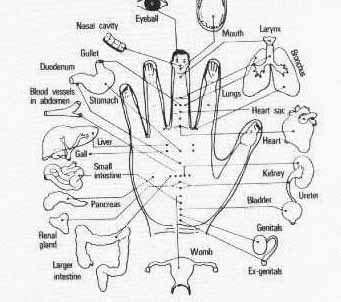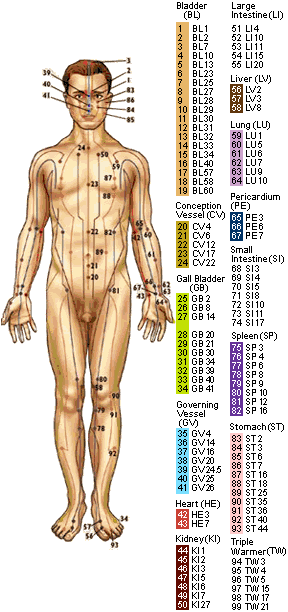Acupressure

Acupressure is a traditional Chinese medicine (TCM) technique based on
the same ideas as acupuncture. Acupressure involves placing physical
pressure by hand, elbow, or with the aid of various devices on different
acupuncture points on the surface of the body. Traditional Chinese
Medicine does not usually operate within a scientific paradigm but some
practioners make efforts to bring practices into an evidence-based
medicine framework.
There is no scientific consensus over whether or not evidence supports
efficacy of acupressure beyond a placebo. Reviews of existing clinical
trials have been conducted by the Cochrane Collaboration and Bandolier
according to the protocols of evidence-based medicine; for most
conditions they have concluded a lack of effectiveness or lack of
well-conducted clinical trials.
The points used may or may not be in the same area of the body as the
targeted symptom. The TCM theory for the selection of such points and
their effectiveness is that they work by stimulating the meridian system
to bring about relief by rebalancing yin, yang and qi.
This theory is based on the paradigm of TCM, not that of science. An
acupressure wristband that is claimed to relieve the symptoms of motion
sickness and other forms of nausea is available. The band is designed to
provide pressure to the P6 acupuncture point, a point that has been
extensively investigated.
The Cochrane Collaboration, a group of evidence-based medicine (EBM)
reviewers, reviewed the use of P6 for nausea and vomiting, and found it
to be effective for reducing post-operative nausea, but not vomiting.
The Cochrane review included various means of stimulating P6, including
acupuncture, electro-acupuncture, transcutaneous nerve stimulation,
laser stimulation, acu-stimulation device and acupressure; it did not
comment on whether one or more forms of stimulation were more effective.
EBM reviewer Bandolier said that P6 acupressure in two studies showed
52% of patients with control having a success, compared with 75% with P6
acupressure. One author of an article published in the Scientific
Review of Alternative Medicine disagreed.
A Cochrane Collaboration review found that massage provided some long-term benefit for low back pain, and said, "It seems that acupressure or pressure point massage techniques provide more relief than classic (Swedish) massage, although more research is needed to confirm this."
Many East Asian martial arts also make extensive study and use of
acupressure for self-defense and health purposes (chin na, tui na).
The points or combinations of points are said to be used to manipulate
or incapacitate an opponent. Also, martial artists regularly massage
their own acupressure points in routines to remove blockages from their
own meridians, claiming to thereby enhance their circulation and
flexibility and keeping the points "soft" or less vulnerable to an
attack.
Attacking the acupressure points is one theme in the wuxia genre of movies and novels.
-
Luo Points is an acupuncture term referring to special points in the
body that are believed to have greater significance. According to
acupuncture theory, the points, twelve in all, are places where the body
can be manipulated to greater effect when applying acupuncture or tui
na techniques, and can be used to aid the circulation of qi so as to
keep the body healthy.
-
Fire Cupping is a method of applying acupressure by creating a vacuum
next to the patient's skin. In traditional Chinese medicine (TCM) it
involves placing glass, plastic, or bamboo cups on the skin with a
vacuum. The therapy is used to relieve what is called "stagnation" in
TCM terms, and is used in the treatment of respiratory diseases such as
the common cold, pneumonia, and bronchitis. Cupping is also used to
treat back, neck, shoulder, and other musculoskeletal pain. Its
advocates claim it has other applications as well. This technique, in
varying forms, has also been found in the folk medicine of Vietnam, the
Balkans and modern Greece, among other places.

No comments:
Post a Comment